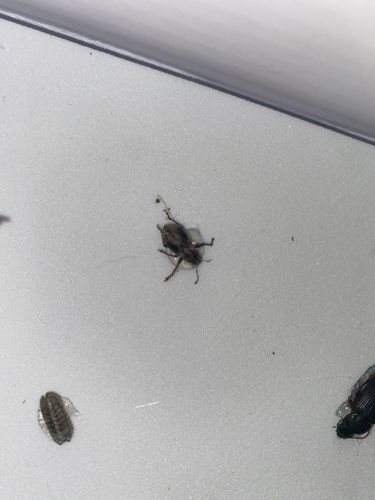Broad-nosed Weevil (possibly) and Woodlouse (left)
Scientific Name: Curculionidae (for the weevil-like insect), Isopoda (for the woodlouse)
Order & Family: Order: Coleoptera, Family: Curculionidae (for weevil-like insect); Order: Isopoda, Suborder: Oniscidea (for woodlouse)
Size: Weevils (Curculionidae) typically range from 1 to 40 mm. Woodlice (Oniscidea) typically range from 2 to 20 mm. The exact size of the depicted individuals cannot be determined without a scale, but they appear to be within these ranges for smaller specimens.

Natural Habitat
The weevil-like insect (upper-middle) is likely found on plants, trees, or in gardens. The woodlouse (lower-left) prefers damp, dark environments such as under rocks, logs, leaf litter, or in decaying wood. The beetle-like insect (lower-right) is difficult to identify but appears to be a ground beetle or similar.
Diet & Feeding
Broad-nosed weevils (like the possible specimen) are typically herbivorous, feeding on plant leaves, stems, and roots. Woodlice are detritivores, feeding on decaying organic matter like dead leaves, wood, and sometimes fungi.
Behavior Patterns
Weevils are often slow-moving and can feign death when disturbed. Many are nocturnal. Woodlice are often nocturnal and prefer moist environments to avoid desiccation. They are known for their rolling-up defense mechanism when threatened, though not all species do this. They move slowly and methodically.
Risks & Benefits
Weevils can be agricultural pests, damaging crops and ornamental plants. However, some species are used in biological control of invasive plants. Woodlice are generally beneficial as decomposers, contributing to nutrient cycling in ecosystems. They are not harmful to humans, though large indoor infestations can indicate moisture problems.
Identified on: 9/17/2025